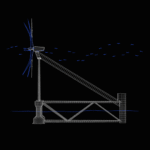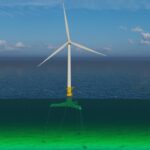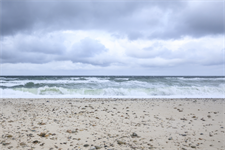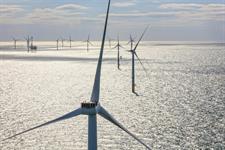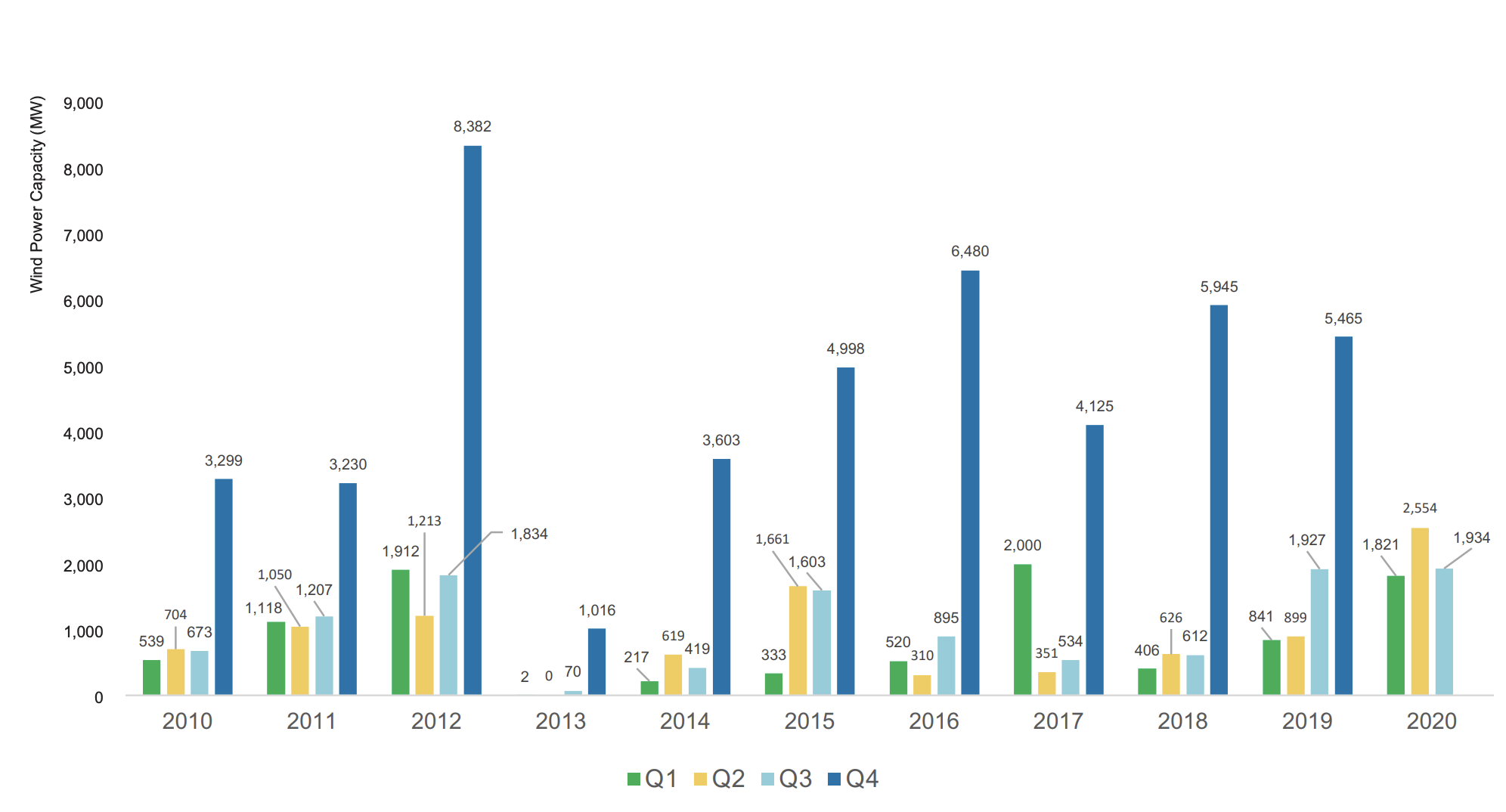X1 Wind’s downwind self-aligning floating offshore wind system aims to reduce weight and costs
Energy Disrupter
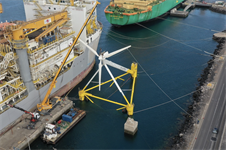
Offshore construction is underway on a self-aligning, floating wind power prototype called PivotBuoy, designed for downwind turbines that aims to achieve substantial weight reductions compared with other widely used platforms and turbines.
The laying of gravity-based structure (GBS) foundations, comprising three reinforced concrete blocks, has just been completed 2km off the coast of Gran Canaria in Spain’s Canary Islands.
The 225kW PivotBuoy prototype project is led by patent owner Barcelona-based startup, X1 Wind. The company enjoys the support of eight partners including utility EDP’s research arm EDP New, certification body DNV GL and regional consortium Plocan.
Installation of the actual PivotBuoy floating structure and turbine is imminent, pending a clear window of opportunity for weather and sea conditions for installing the umbilical cable and towing the platform to its site, X1 Wind told Windpower Monthly.
In October 2021, a Vestas 225kW V29 nacelle was mounted on the PivotBuoy structure on the neighbouring island of Las Palmas, Gran Canaria, after the work was set back by the Cumbre Vieja volcano, which has been erupting between September and December this year.
The floating platform swivels on its single mooring point, constituting one of the three corners of its triangular structure. As with a weathervane, the structure swivels on that axis in the water, self-aligning passively with the wind, thus eliminating the motorised and expensive active orientation, or yaw systems, of conventional turbines.
The prototype’s oblique pyramid structure means that the nacelle’s main steel support is inclined and rests on two supporting legs either side, as with a painter’s easel. This makes the structure “more efficient in load transmission”, according to the company.
While other floating prototypes are under development—including weather-vaning systems — X1 Wind claims that the PivotBuoy’s combination of technologies make its system unique.
The single-point swivelling mooring system is connected to the foundations by vertical tensioned tendons. The tension leg platform (TLP) system keeps motions on the structure to a minimum, facilitating maintenance and reducing fatigue in the power cable. It also enables the platform to be anchored at depths of over 500m, X1 Wind claims.
X1 Wind hopes to achieve “substantial” weight reductions compared with other existing spar and semi-submersible offshore platforms and towers.
The prototype forms part of the Canary Islands’ Plocan initiative, comprising three offshore test sites that aim to test and demonstrate up to 300MW of offshore prototypes and precommercial solutions by 2025.
The EU’s Horizon programme awarded a €4 million grant to the PivotBuoy project in March 2019. The project won a further €2.5m European Innovation Council (EIC) accelerator grant in June 2021 to develop the design and certify the full-scale unit of the platform.
PivotBuoy is designed for downwind turbines, meaning the rotor hub points away from the wind, as opposed to mainstream upwind turbines, which face the wind.
With winds blowing from behind, any blade bending will be away from the tower. This avoids costs typical for upwind turbines, such as pre-bending and reinforcing blades to prevent collision with the turbine tower.
This “becomes a critical saving when scaling up to large 15MW-plus rotors”, according to X1 Wind.
Modelling on the prototype at Germany’s Fraunhofer institute has demonstrated the pyramid structure to reduce wake and shadow interferences compared with other downwind turbines using conventional towers.
The so-called X30 unit, with a 30-metre hub height, is the precursor to a 5-6MW prototype, called the X90, which will stand at 90 metres. The third iteration will be a 12-15MW version, the X140, at 140 metres tall.
In the near term, X1 Wind has a preference for dedicated downwind turbine manufacturers. However, the company is also in contact with upwind turbine OEMs as it gears up to develop its full-scale pilots.


